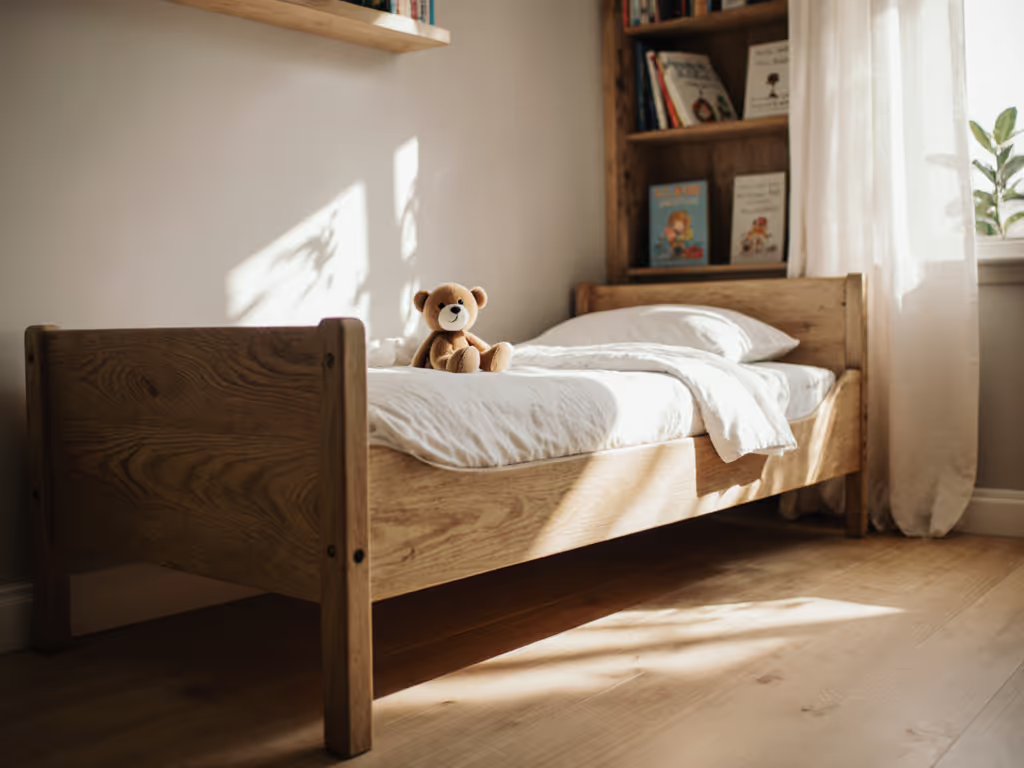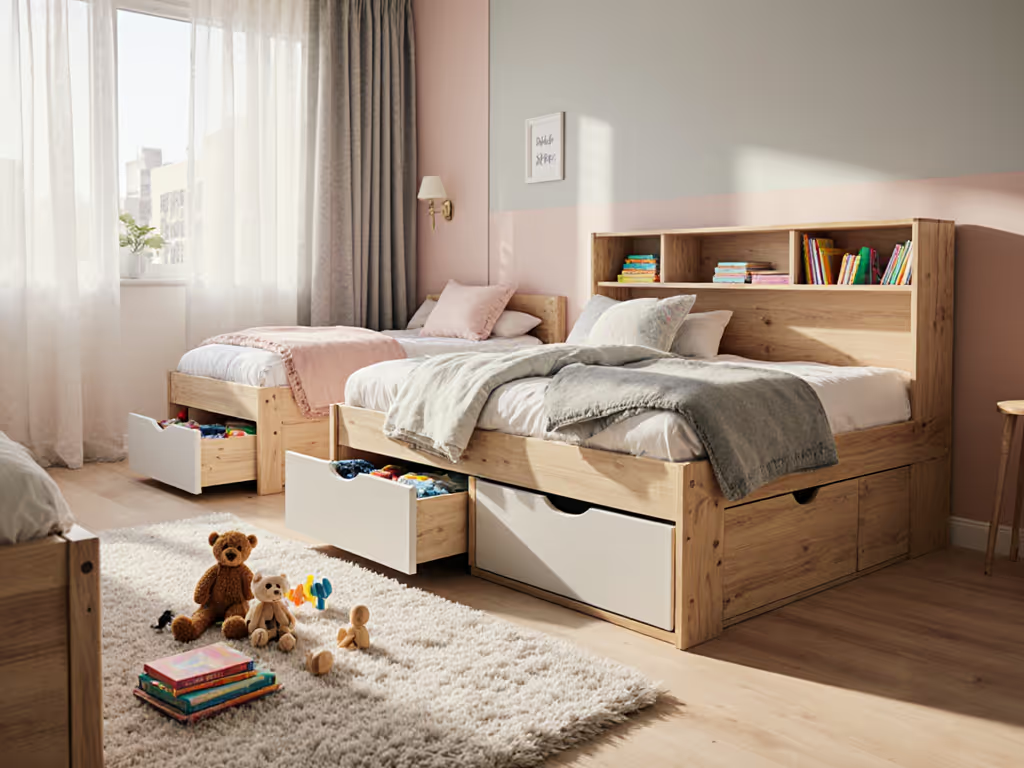
Complete Guide to the Role of Floor Beds
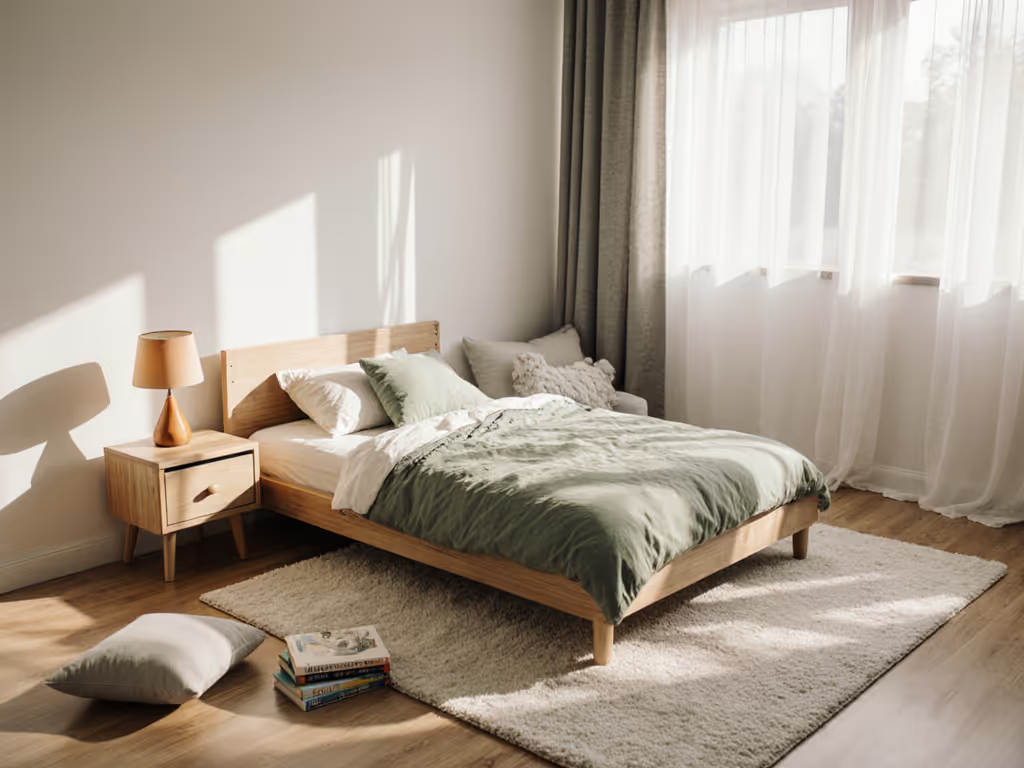
Nearly 60 percent of parents are searching for safer, more independent sleep solutions for their toddlers. The traditional crib no longer meets all the needs of growing, curious children who long for a bit of freedom. Floor beds give families a fresh choice that combines safety with the chance for little ones to move and learn on their own. If you want a sleeping setup that matches your child’s natural desire for independence, this guide highlights exactly how floor beds can support early growth and confidence.
Key Takeaways
| Point | Details |
|---|---|
| Unique Sleeping Solution | Floor beds offer a safe, ground-level sleeping environment that encourages toddlers' exploration and independence. |
| Developmental Benefits | These beds support cognitive and motor skill development by allowing unrestricted movement and self-directed exploration. |
| Types and Adaptability | Montessori, low-profile, and growable wood beds provide various options to suit different developmental needs and room configurations. |
| Safety and Setup | Creating a safe floor bed environment requires careful childproofing and consideration of potential hazards to ensure optimal exploration opportunities. |
Defining Floor Beds for Toddlers
A floor bed represents an innovative sleeping solution designed specifically for young children, offering a unique approach to early childhood rest and independence. Unlike traditional raised beds, floor beds sit directly on the ground or just inches above the floor, creating a safe and accessible sleeping environment that empowers toddlers to explore and move freely.
Rooted in the Montessori educational philosophy, floor beds are more than just a sleeping surface. They embody a developmental approach that respects a child's natural curiosity and desire for autonomy. As research from the American Society for the Prevention of Cruelty to Children (ASPCC) highlights, these beds allow children to get in and out unassisted, promoting critical developmental skills like self-direction and spatial awareness. By providing an unrestricted environment, floor beds encourage children to develop motor skills, decision-making capabilities, and a sense of personal agency.
The core characteristics of floor beds include:
- Ultra-low height (typically 4-6 inches from the ground)
- Minimalist design focusing on safety and functionality
- Constructed from durable, child-friendly materials
- Adaptable to various room configurations
- Designed to grow with the child's changing needs
Parents considering a floor bed should understand that this isn't just a trendy sleeping arrangement - it's a purposeful design that supports a child's developmental journey. By creating an environment where toddlers can independently navigate their sleeping space, floor beds offer a unique blend of safety, comfort, and educational philosophy. The goal is not just providing a place to sleep, but creating a supportive learning environment that respects a child's emerging independence.
Types of Floor Beds and Key Differences
Floor beds for toddlers are not a one-size-fits-all solution. Montessori-inspired floor beds, traditional low-profile beds, and growable wood beds represent three distinct approaches to creating a safe, developmentally appropriate sleeping environment for young children. Each type offers unique features designed to support a child's growth, independence, and changing needs.
The Montessori floor bed stands out as the most philosophy-driven option. Characterized by an ultra-minimalist design, these beds sit directly on the floor or just inches above ground level. They embody Dr. Maria Montessori's core principle of enabling children to explore their environment independently. Typically constructed from natural materials like solid wood or organic fabrics, these beds prioritize unrestricted movement and sensory engagement. Parents appreciate how these beds support a child's natural developmental trajectory by allowing spontaneous exploration and self-directed learning.
Key types of floor beds include:
Here's a comparison of the main types of floor beds for toddlers:
| Type of Floor Bed | Key Features | Age Range |
|---|---|---|
| Montessori Floor Bed | Minimalist design<br>Directly on floor<br>Unrestricted movement | 18 months–6 years |
| Traditional Low-Profile Bed | Slight elevation<br>Safety rails<br>Simple design | 2–6 years |
| Growable Wood Bed | Adjustable size<br>Solid wood<br>Long-term use | 3–14 years |
| Platform Floor Bed | Flat, firm base<br>Minimal elevation<br>Easy setup | 2–7 years |
| Mattress-on-Floor Approach | Most basic<br>No frame<br>Maximum flexibility | 18 months–5 years |
- Montessori Floor Beds: Minimalist design, ground-level placement
- Traditional Low-Profile Beds: Slightly raised, with safety rails
- Growable Wood Beds: Adjustable designs spanning ages 3-14
- Platform Floor Beds: Flat, firm surface with minimal elevation
- Mattress-on-Floor Approach: Most basic floor sleeping method
Research from bioresources highlights an emerging trend of growable wood beds designed to accommodate children from ages 3 to 14. These innovative beds offer remarkable versatility, addressing multiple developmental stages through adjustable configurations. Unlike traditional beds that require frequent replacement, growable beds adapt to a child's changing physical dimensions and aesthetic preferences. This approach not only provides long-term value but also creates a consistent, familiar sleeping environment that can evolve alongside the child's growth.
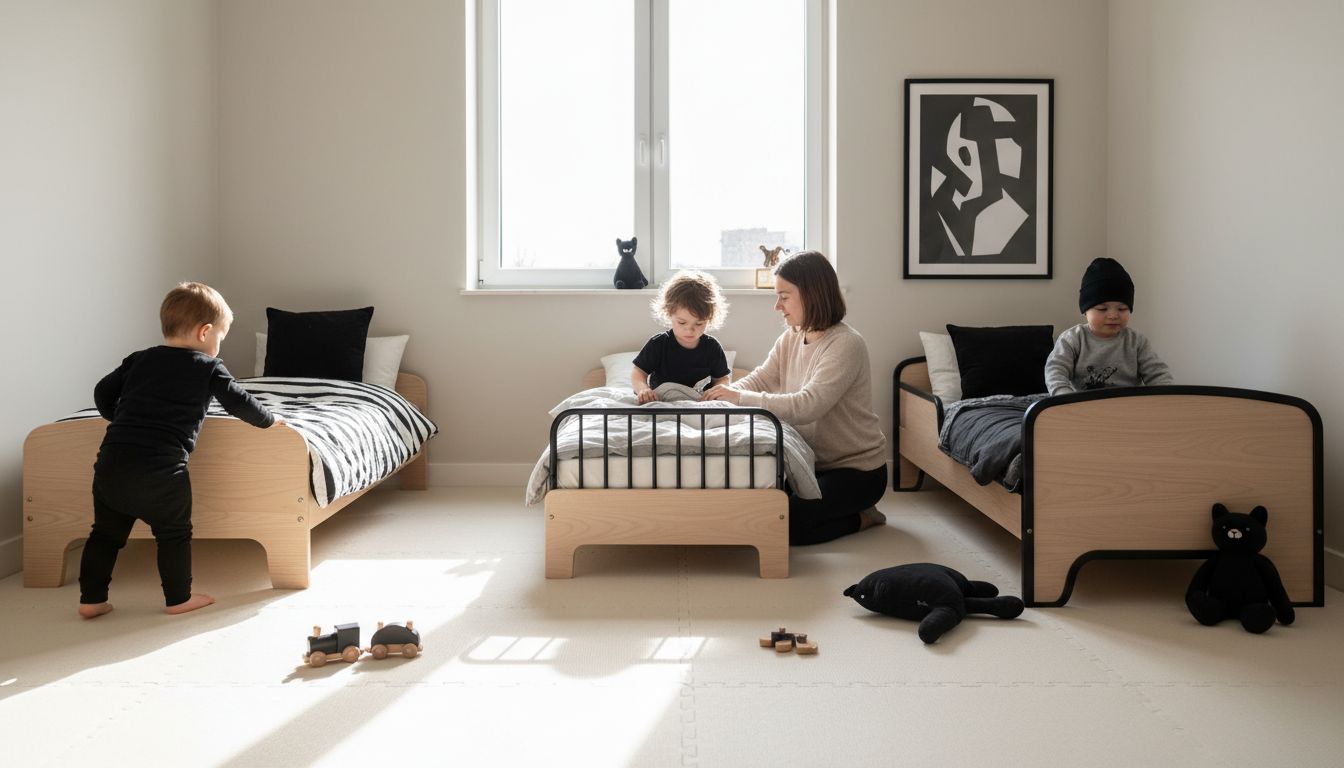
Benefits and Drawbacks of Floor Beds
Choosing a floor bed for your toddler involves carefully weighing significant developmental advantages against potential practical challenges. While these innovative sleeping solutions offer remarkable benefits for child development, they aren't without considerations that parents must thoughtfully evaluate before implementation. Understanding both the strengths and potential limitations helps create an informed decision tailored to your family's unique needs and living circumstances.
The most compelling benefits of floor beds center on promoting child independence and cognitive development. According to research from the American Society for the Prevention of Cruelty to Children (ASPCC), floor beds fundamentally support self-reliance and confidence by allowing children unrestricted movement and exploration. Young children can independently enter and exit their sleeping space, which cultivates critical decision-making skills and spatial awareness. This approach dramatically differs from traditional confined sleeping arrangements, encouraging natural curiosity and building intrinsic problem-solving capabilities from an early age.
Key benefits and potential drawbacks include:
-
Benefits:
- Encourages independent movement
- Supports cognitive and motor skill development
- Creates flexible sleeping environment
- Promotes sense of personal agency
- Reduces fear of falling from elevated beds
-
Potential Drawbacks:
- Requires extensive childproofing
- Potential challenges with room temperature regulation
- May require more frequent bedding maintenance
- Possible increased exposure to drafts
- Demands consistent parental supervision
From a practical perspective, floor beds demand thoughtful implementation. Parents must meticulously prepare the surrounding environment, ensuring complete childproofing and creating a safe, controlled space that supports the child's newfound freedom. While the developmental advantages are substantial, the approach requires commitment to maintaining a carefully structured sleeping area. Research from bioresources emphasizes that successful floor bed implementation goes beyond simply placing a mattress on the ground - it's about creating a holistic, supportive environment that grows with your child's evolving developmental needs.
Safety Considerations and Setup Tips
Floor bed safety requires a comprehensive approach that goes beyond simply placing a mattress on the ground. Parents must create a meticulously planned environment that minimizes risks while maximizing a child's ability to explore and develop independently. Understanding potential hazards and implementing strategic safety measures becomes crucial in transforming a floor bed from a simple sleeping surface into a secure developmental space.
Research from medical sources highlights the significant injury potential associated with falls, even from short distances. A PubMed study emphasizes that children are particularly vulnerable to accidental injuries during early developmental stages. This underscores the critical importance of implementing robust safety protocols around floor bed setups. Key safety considerations include creating a completely childproofed perimeter, ensuring soft flooring materials, and systematically removing potential hazards that could compromise a child's safety during unsupervised exploration.
Critical safety setup recommendations include:
-
Floor Preparation:
- Use low-pile, neutral-colored carpeting
- Select antimicrobial flooring materials
- Ensure smooth, even surface without bumps or uneven areas
- Use soft, impact-absorbing floor coverings
-
Room Safety Checklist:
- Secure furniture to walls
- Cover electrical outlets
- Remove small objects within child's reach
- Install safety gates at room entrances
- Use cordless window treatments
Professional educational research suggests that floor environments should be deliberately designed with safety and developmental needs in mind. Just as classroom spaces are carefully curated to support learning, a child's floor bed area requires similar thoughtful preparation. This means creating a controlled space that allows freedom of movement while minimizing potential risks.
Temperature regulation, air quality, and visual stimulation become as important as physical safety, transforming the floor bed from a mere sleeping space into a holistic developmental environment that supports a child's natural curiosity and growth.
Comparing Floor Beds With Other Toddler Beds
Choosing the right sleeping arrangement for a toddler involves carefully evaluating multiple bed types, each with distinct advantages and developmental implications. Floor beds, traditional cribs, convertible beds, and raised toddler beds represent four primary sleeping solutions, each offering unique approaches to supporting a child's growth, safety, and independence. Understanding the nuanced differences between these options helps parents make an informed decision tailored to their child's specific needs and developmental stage.
Unlike traditional raised beds with high railings, floor beds fundamentally reimagine the sleeping environment by providing unrestricted movement and encouraging self-directed exploration. Montessori-inspired research emphasizes that this approach supports intrinsic developmental skills by allowing children to independently navigate their sleeping space. In contrast, conventional cribs and raised toddler beds create more controlled environments that limit a child's ability to move freely, potentially restricting natural curiosity and motor skill development.
Key comparison points between bed types include:
-
Floor Beds:
- Lowest height, ground-level placement
- Maximum movement freedom
- Promotes independence
- Requires extensive childproofing
-
Traditional Cribs:
- High railings
- Limited child movement
- Strong safety constraints
- Easy parental monitoring
-
Convertible Beds:
- Adjustable design
- Multiple configuration options
- Longer usage lifecycle
- More expensive initial investment
Research from bioresources highlights the emerging trend of growable beds that adapt to a child's changing physical needs from ages 3 to 14. These innovative designs bridge the gap between traditional and contemporary sleeping solutions, offering versatility that extends beyond the toddler years. By prioritizing functionality, safety, and long-term value, such beds represent a forward-thinking approach to children's sleeping environments that goes beyond the limitations of single-stage bed designs.
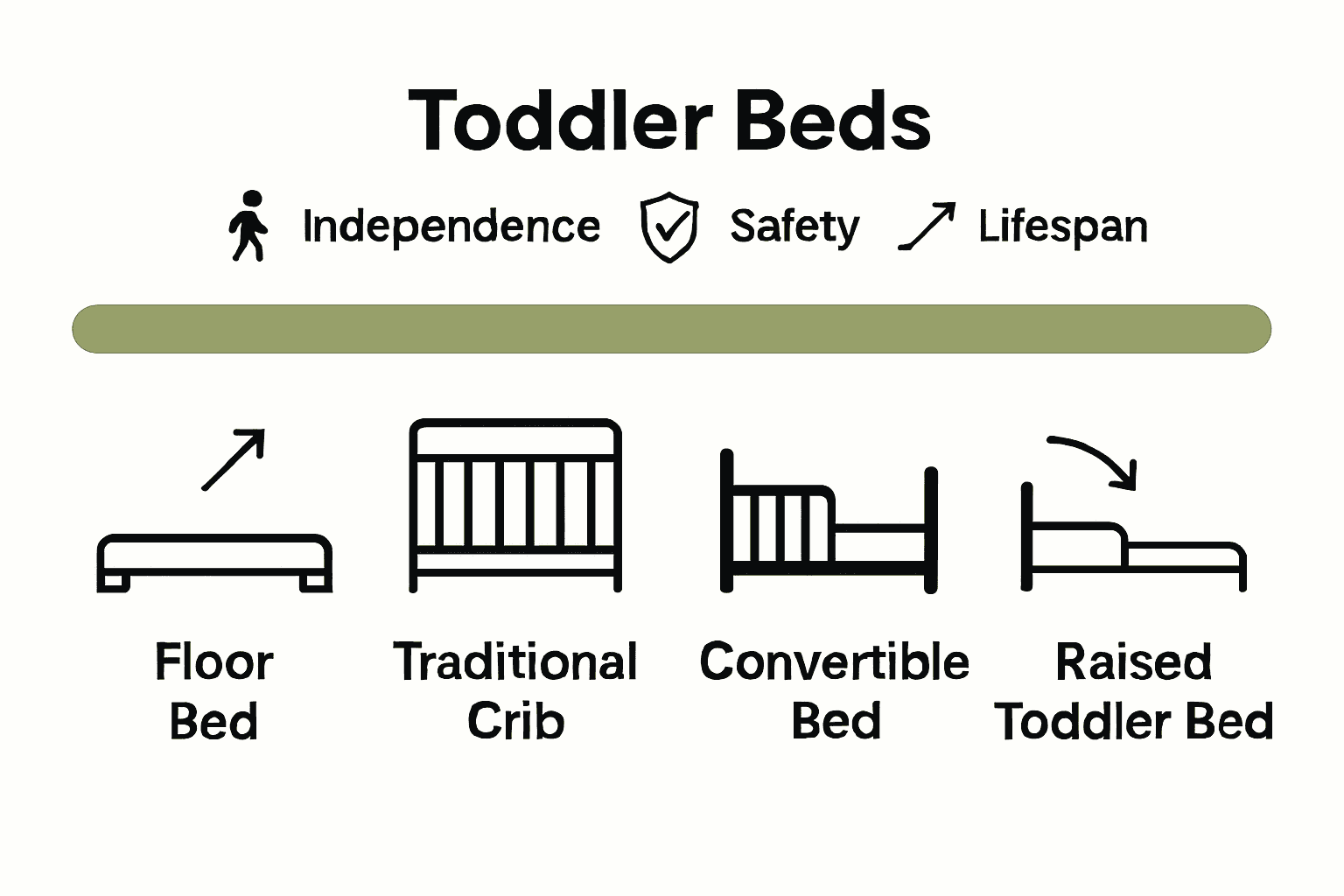
Discover the Ideal Floor Bed Solution for Your Toddler
Understanding the unique challenges of choosing the right floor bed for your toddler is the first step toward creating a safe and nurturing sleep environment. This article highlights important concerns like promoting independence, ensuring safety through childproofing, and balancing developmental benefits with practical needs. If you want a bed that supports your child’s growth and confidence while fitting perfectly within your living space, informed guidance is essential.
Explore expert advice and carefully curated solutions designed to help first-time parents like you tackle these decisions confidently. At City Toddler Beds, you will find comprehensive resources that cover safety standards, space-saving designs, and eco-friendly materials that align with Montessori principles and modern family lifestyles. Don’t wait to create a sleep space that fosters your toddler’s independence and well-being. Visit City Toddler Beds now to access trusted information and take the next step in providing your child the perfect floor bed setup.
Frequently Asked Questions
What is a floor bed for toddlers?
A floor bed is a sleeping solution designed for young children, characterized by its low height positioned directly on the ground or minimally elevated. It encourages independence, allowing toddlers to safely enter and exit their sleeping space unassisted.
What are the benefits of using a floor bed for toddlers?
Floor beds promote child independence, cognitive development, and motor skills. They allow for unrestricted movement, foster a sense of personal agency, and help reduce the fear of falling associated with elevated beds.
How do floor beds compare to traditional cribs or raised toddler beds?
Unlike traditional cribs or raised beds that confine movement, floor beds provide maximum freedom for exploration and self-navigation. This approach supports intrinsic developmental skills by allowing toddlers to easily access their sleeping environment.
What safety considerations should I keep in mind when using a floor bed?
It's essential to childproof the area around the floor bed, ensuring the environment is free of hazards. Use soft flooring materials, secure furniture to walls, cover electrical outlets, and maintain a comfortable room temperature to create a safe and supportive sleeping space.

